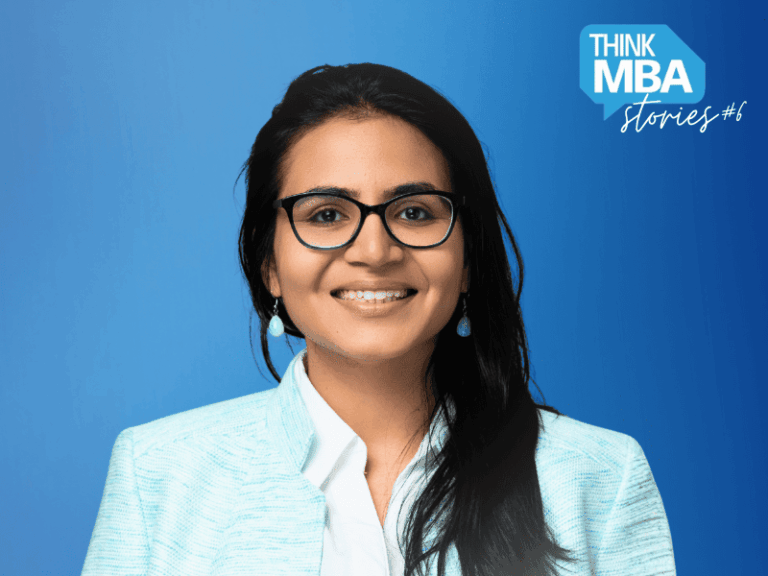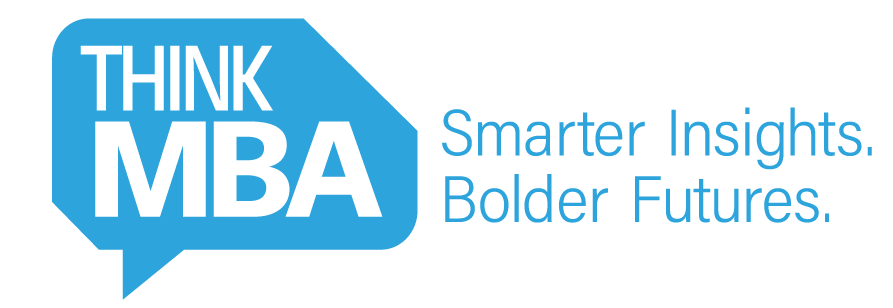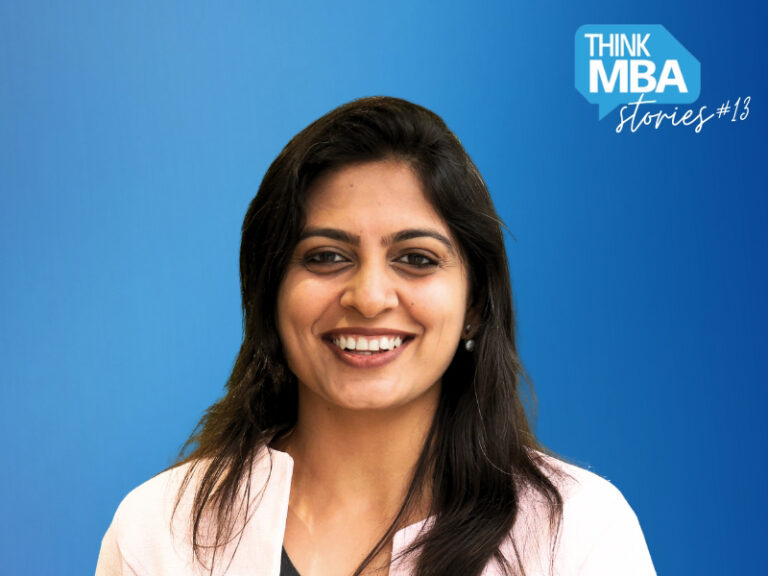Contact Us
[email protected]
From Oncology to Innovation: How the MIT Sloan MBA Transformed Karishma Sewaramani’s Journey

Editor’s Note: In this sixth installment of our Real Stories series, we spotlight Karishma Sewaramani, Lead and Senior Product Manager at Onc.AI, whose work exemplifies the fusion of science, strategy, and purpose.
At Onc.AI, Karishma leads two FDA-regulated products — LCM and Serial CTRS — and has successfully driven the company’s Breakthrough Device Designation initiative. Her story is a powerful example of how the knowledge and mindset gained at MIT Sloan can translate into tangible healthcare innovation.
Karishma’s journey bridges the worlds of medicine, technology, and business. She applies data-driven thinking and clinical empathy to tackle some of healthcare’s most complex challenges — from regulatory strategy and multi-institutional collaborations to developing AI-powered imaging tools that deliver real value to oncologists and patients alike.
What truly sets Karishma apart is her ability to see healthcare not just as a science, but as a service to humanity. Her career demonstrates how an MIT Sloan MBA can serve as a catalyst for purpose-driven leadership — transforming ideas into impact and driving meaningful change in the healthcare sector.
Before MIT Sloan
Before pursuing her MBA, Karishma worked as a Radiation Oncologist in India, treating patients daily and witnessing firsthand the systemic gaps that prevented personalized care at critical decision points.
“I saw how often healthcare lacked structure,” she recalls. “The processes were fragmented, and urgent patient needs rarely translated into effective, timely solutions.”
Driven to change that reality, Karishma launched her own healthcare startup in India. “That’s when I realized how much I loved working at the intersection of healthcare and business — a place where I could create solutions with impact at a much larger population scale,” she says.
That realization ultimately led her to MIT Sloan, where she set out to build the toolkit needed to transform clinical insight into scalable products, sustainable systems, and strategies that could shape the future of healthcare.
Impact of MIT Sloan on your career
MIT Sloan marked a breakthrough in Karishma’s career. It was there that she began shaping her vision for a more effective system to advance healthcare innovation. She realized that in the intersection of medicine and AI, success depends on people who can bridge clinicians, data scientists, regulators, and business leaders.
“At Sloan, I learned that if a claim can’t be supported by clean evidence and a believable path to coverage, it’s better to adjust the product early rather than perfect a feature that will never reach patients,” Karishma says.
Her MBA experience taught her to apply structure and evidence in everyday decision-making — moving technical validity, clinical validity, and clinical utility in parallel, each with clear checkpoints. This framework now underpins her approach at Onc.AI.
“Earning an MBA from MIT Sloan is not just an academic pursuit — it’s a test of endurance, clarity, and self-discovery.“
Key principles she carries forward include:
- Design for adoption, not just accuracy. Prioritize calibration over raw model performance, write outputs that clinicians can act on in one workflow step, and build a minimum viable adoption plan before the model impresses anyone.
- Treat regulation and reimbursement as design inputs. They’re not hurdles at the end but part of the blueprint from day one.
- Build evidence as a portfolio. Instead of waiting for one perfect study, stack small, credible pieces that answer different questions — “That makes decisions faster and keeps everyone honest when results are mixed,” she adds.
- Translate across stakeholders. Map incentives for clinicians, patients, regulators, and payers, then craft one consistent story that holds up in all four rooms. “The language changes, but the claim does not,” she explains. “Sloan’s mix of analytics and operator thinking helped most with this — it taught me to make trade-offs visible, say what we will not do, and anchor everything on patient benefit.”
At Onc.AI, these principles show up in tangible ways — simple, interpretable outputs for early follow-up decisions, study designs that measure what truly matters to care teams, and early alignment with legal, privacy, and procurement partners.
“The result,” Karishma says, “is fewer surprises, faster learning, and products that actually make it into clinics — not just slides.”
From Oncologist to MIT Sloan Innovator
As an oncologist in India, Karishma often worked in an environment defined by uncertainty — where every decision carried weight, and clarity was rare. Over time, she developed a clinical and practical framework to bring structure to ambiguity and guide decision-making with purpose.
Her growing realization was simple but profound: the ability to translate complex medical challenges into actionable solutions can save lives. That insight led her to pursue an education that would help her transform complexity into concrete action.
At MIT Sloan, courses such as Analytics Edge and Strategic Decision Making in Life Sciences equipped her with the tools to turn fuzzy ideas into testable hypotheses, map key stakeholders — clinicians, regulators, and payers — and measure success by patient outcomes, not just elegant models.
“Clinically, I learned to value clarity under uncertainty; at Sloan, I learned to quantify it,” Karishma reflects. In both medicine and business, she discovered, progress depends on making good decisions when perfect data doesn’t exist.
“Practically, I combine both worlds through a simple playbook,” she adds. When faced with uncertainty, Karishma applies a disciplined approach: write the decision in one line, list the available options, choose one clear success metric, and run a small pilot — typically 10 to 20 cases — with predefined pass/fail thresholds.
“MIT shifted me from perfect planning to test-and-learn,” she says. “It taught me to take smart risks, frame decisions clearly, and use small pilots to de-risk before scaling.”
REAL-LIFE IMPACT
Seeing the Limits of Stage-Care
“In clinic, I saw the limits of stage-based care every day,” Karishma says. “Two patients can share the same stage and treatment — one responds, the other progresses.”
She explains that stage conceals huge biological variation: tumor margins, vascularity, inflammation, genetics, even adherence risks.
“We still lack point-of-decision tools that combine these signals into individualized recommendations,” she notes. “Stage guides eligibility — but precision tools should guide personalization.”
At the Dana-Farber Cancer Institute in Boston
Working with the world-renowned Dana-Farber Cancer Institute in Boston was another pivotal chapter in Karishma’s journey. Collaborating with one of the top cancer centers deepened her understanding of how artificial intelligence truly succeeds — or stalls — in real clinical environments.
At Dana-Farber, her team focused on three essential pillars that determine whether AI can meaningfully improve patient care:
- Clinical champions and governance: Establishing early alignment on intended use, patient safety, and interpretability.
- Data readiness: Ensuring DICOM and EMR completeness, versioning, and auditability — with no shortcuts.
- Workflow fit: Embedding AI outputs seamlessly into tumor boards and longitudinal follow-ups, supported by clear thresholds, documentation, and feedback loops.
“The big lesson,” Karishma reflects, “is that implementation is only 20% modeling and 80% change management, education, policy, and reliability engineering.”
This experience taught her that technology alone doesn’t transform healthcare — people, process, and trust do.
REAL-LIFE IMPACT
When COVID-19 Broke the Chain of Care
“During COVID-19, I watched treatable cancers become untreatable — not because therapies failed, but because patients couldn’t reach them,” Karishma recalls.
Lockdowns and fear disrupted treatment continuity.
“What failed wasn’t judgment — it was the system,” she says. “We lacked tele-oncology platforms to monitor patients remotely, flag risk, and adjust plans.”
That experience inspired her mission: to build tech-enabled, scalable pathways that keep evidence and care flowing — even when clinics can’t.
Challenges and Valuable Outcomes
Earning an MBA from MIT Sloan is not just an academic pursuit — it’s a test of endurance, clarity, and self-discovery. Students are constantly challenged to navigate competing priorities, stretch their thinking, and build the inner resources needed to face new and complex situations.
For Karishma, the most valuable outcome was discovering a different way of thinking.
“Sloan pushed me to start from first principles and systems thinking,” she reflects. “It taught me to slow down, define the real problem, and design solutions that actually work in practice.”
1. Prioritization is key
At MIT, opportunities are endless — networking events, clubs, treks, and academic challenges. “You can’t do everything,” Karishma admits. “I had to stop and ask myself, What do I really want from this MBA?” Her answer was clear: healthcare AI, industry strategy, and product leadership. Once she set that filter, saying no became easier, her calendar lighter, and her work sharper.
2. Identity shift
Transitioning from direct patient care to developing tools that help thousands of patients required redefining her professional identity. “The fix was the same,” she says. “Define a few outcomes that matter, line up mentors, and measure progress against those — not against everyone else’s highlight reel.”
3. Challenging your way of thinking
Sloan reinforced the discipline of first-principles and systems thinking: define the core problem, map incentives across clinicians, patients, regulators, and payers, and choose the move with the highest leverage.
“During the MBA, you’re constantly pushed to frame choices with simple models — like decision trees or expected value — so that trade-offs become visible and honest,” Karishma explains.
4. Learning to reshape communication.
The program also reshaped how she communicates and leads. “That mindset, more than any title, is the asset I use every day at Onc.AI — from shaping evidence plans to negotiating partnerships and deciding what to build next,” she adds.
Ultimately, the challenges at MIT Sloan taught Karishma not just how to think smarter, but how to focus, prioritize, and lead with clarity — lessons that continue to guide her at the intersection of healthcare and innovation.
ROI from Your MBA
For Karishma, the financial burden of pursuing an MBA was eased by a scholarship — but she’s quick to note that return on investment looks different for everyone. “An MBA by itself doesn’t guarantee financial security,” she explains. “It’s what you do with it that creates value.”
Her earliest returns weren’t monetary at all. They came in the form of sharper thinking, faster decision-making, and newfound credibility across diverse stakeholders — clinicians, data scientists, and regulators alike. The financial ROI followed naturally as her responsibilities expanded to include regulatory strategy, evidence planning, and strategic partnerships.
“The key is to actively use what you learn — frameworks, networks, and communication habits — in real work,” she emphasizes. “If you treat the MBA as a toolkit you deploy, the ROI shows up. But if you treat it as a credential you store on a shelf, it won’t.”
“If you treat the MBA as a toolkit you deploy, the ROI shows up. But if you treat it as a credential you store on a shelf, it won’t.“
Is an MBA Worth it?
When asked whether the MBA was worth it, Karishma doesn’t hesitate.
“Yes — if you treat it as an operating system upgrade, not a credential,” she says. “It’s worth it when you (a) define a mission, (b) use the MBA to collect the tools and allies you need, and (c) leave with artifacts that make you unstoppable in that mission.”
For her, the MBA becomes the right choice when it clearly accelerates a personal mission — offering not just a new way of thinking, but trusted allies and tangible proof that you can deliver real results.
1. Use it to reset how you think and execute — not as a label
Karishma entered Sloan with a clear goal: to understand the U.S. healthcare system end-to-end, learn how startups truly operate, deepen her expertise in AI and oncology, and bridge her clinical background with business skills to build innovative, scalable healthcare solutions.
2. It changes your default behavior
“At Sloan, you learn to write a clear decision memo, pick one success metric, run a small pilot, and then scale,” Karishma explains. She also learned to map incentives across clinicians, patients, regulators, and payers — ensuring she was solving the right problem, not just the convenient one.
3. Mentors and peers become long-term collaborators
“I still lean on classmates to sanity-check evidence plans and stress-test product ideas,” she shares. “But the Sloan network isn’t a contact list — it’s a small group of people who actually pick up the phone when there’s a hard problem.”
4. There are costs and trade-offs
Karishma is equally candid about the challenges. “Tuition, time away from industry, and the risk of drifting if you try to do everything are real,” she notes. Her approach was to focus on hands-on projects in health tech, write and present work that could stand up to clinicians’ scrutiny, and deeply understand the regulatory and reimbursement realities that determine whether a product can truly reach patients.
“You can get parts of this without an MBA — through great managers and the right role,” she acknowledges. “If you already have mentors and a path to your own difficult work, an apprenticeship can be faster. But if you want to rewire how you think and build something enduring, the MBA can be transformational.”
The bridge to a vocational career path
In the intersection of healthcare and AI, hiring managers aren’t just looking for credentials — they’re looking for translators. The most valuable professionals are those who can bridge clinicians, data scientists, regulators, and business leaders.
“An MBA gets you into the right rooms,” Karishma says, “but what truly opens doors is clarity and proof of work.”
She distills her advice into a simple, practical playbook:
- Pick a problem space and build meaningful artifacts. Create two tangible outputs that matter — a small pilot with a clinic or startup, a product demo with a clear value story, or an evidence brief credible enough for a clinician or regulator to endorse.
- Craft a tight narrative. Align your résumé and LinkedIn to connect these artifacts directly to the roles you’re targeting, showing both direction and depth.
- Use your network with intent. Reach out with specific, thoughtful questions — not generic coffee-chat requests.
“If you can explain the problem you want to solve in two sentences and show something you built that works outside a classroom, you’ll get traction,” Karishma emphasizes.
“When you show up with real work, the MBA becomes a multiplier,” adds the Onc.AI Senior Product Manager. “Without it, the degree alone doesn’t guarantee a job.”
Karishma’s Tips for MBA newcomers
An MBA program is far more than lectures and exams. At MIT, it means tapping into the entire ecosystem — not just Sloan. From engineering labs and healthcare initiatives to entrepreneurship centers and clinics, the value lies in using every resource the institute offers.
Karishma shares her key advice for those beginning their MBA journey:
1. Learn from your peers
“There’s a lot to learn if you pay attention,” she says. “Ask classmates about their work, how they make decisions, and what went wrong in real projects.” Some of the most valuable lessons come not from professors, but from the diverse experiences of those sitting beside you.
2. Spend time with people from very different backgrounds
Listen deeply, share your own lessons openly, and build relationships that last beyond the program. “Those conversations often teach you more practical lessons than any case study,” Karishma notes.
3. Explore outside your comfort zone
Take classes you wouldn’t normally choose. You may uncover a new skill or domain that becomes central to your future career.
4. Keep your eyes open for opportunities on campus
“You’re surrounded by an incredible network of curious, intelligent people,” she reminds. The MIT campus offers countless ways to add value and discover unexpected paths — so don’t lock yourself into one too early.
5. Be a giver in your network
Offer help before asking for it. Connect people without expecting anything in return. “When you give first,” Karishma says, “your network compounds in ways you could never plan.”
6. Do practical work and use the full institute
Choose hands-on courses and labs where you can build something real and receive feedback from practitioners.
“The goal,” Karishma emphasizes, “is to leave with artifacts and resources that show what you can do — and a small group of peers and mentors who will work with you again.”
“Some of the most valuable lessons come not from professors, but from the diverse experiences of those sitting beside you.“








